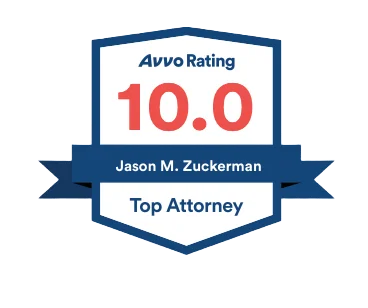
Civil Rights Act: Promise Unfulfilled
Congress enacted the Civil Rights Act of 1964 to achieve equality of employment opportunities. More than half a century later, race discrimination remains all too prevalent, and systemic discrimination bars minorities from advancing in the workplace. We are deeply committed to achieving the promise of the Civil Rights Act by vigorously combatting race discrimination in the workplace.
U.S. News and Best Lawyers® have named Zuckerman Law a Tier 1 firm in Litigation – Labor and Employment in the Washington DC metropolitan area. Contact our race discrimination lawyers today to find out how we can help you in a workplace discrimination case.
To schedule a preliminary consultation about race discrimination, call us at 202-262-8959, or click here.






Unacceptable Racial Glass Ceiling Discrimination Persists
As discussed in a recent article The Black Ceiling: Why African-American Women Aren’t Making It to the Top in Corporate America, there is an unacceptable glass ceiling preventing African Americans from rising to the highest ranks of American companies. Not a single African American woman is CEO of a Fortune 500 company. And there is just one woman on Fortune’s list of the 50 Most Powerful Women in Business. Nearly 80% of the boards of directors of Fortunate 500 companies are male, and just 19 African Americans serve on Fortune 500 boards.
And a study performed by the Northwestern Institute for Policy Research found that in 2015, white applicants were roughly a third more likely to receive invitations for first-round interviews than African-Americans with equal job qualifications.
There is also a glass ceiling at the powerful large law firms that serve Fortune 500 companies. According to a 2017 survey performed by the National Association of Women Lawyers, women of color comprise just 2% of equity partners at the top 200 law firms.
Forms of Race Discrimination
Title VII of the Civil Rights Act of 1964 prohibits an employer from “discriminat[ing] against any individual with respect to his compensation, terms, conditions, or privileges of employment, because of such individual’s race, color, religion, sex, or national origin.” 42 U.S.C. § 2000e-2(a)(1).
Race discrimination can take many forms, including:
- Termination of employment;
- Denial of a promotion;
- Racial slurs in the workplace;
- Pay disparity; and
- Denial of training opportunities.
In 2018, JPMorgan Chase & Co. paid $24 million to settle claims for racial discrimination. The lawsuit alleged “uniform and national in scope” discrimination against African-American financial advisors, such as assigning them to poorer bank branches, understaffing them, and failing to include them in a program for richer clients.
Proving Race Discrimination
Race discrimination can be proven through direct or circumstantial evidence. Direct evidence consists of a specific link between the alleged discriminatory animus and the challenged adverse employment action sufficient to support a finding that an illegitimate criterion motivated the action. An example of direct evidence is an admission by a manager that he fired an employee due to the employee’s race.
Direct evidence is rare, so most race discrimination cases are proven through circumstantial evidence, typically using the burden-shifting framework set forth in McDonnell Douglas Corp. v. Green, 411 U.S. 792 (1973). Under McDonnell Douglas, the discrimination plaintiff must show:
- plaintiff is a member of a protected class;
- plaintiff suffered an adverse employment action; and
- the unfavorable action gives rise to an inference of discrimination.
“[A]n individual plaintiff may establish a prima facie case by `showing actions taken by the employer from which one can infer, if such actions remain unexplained, that it is more likely than not that such actions were based on a discriminatory criterion illegal under’ Title VII.” `not intended to be an inflexible rule.'” Young v. United Parcel Serv., Inc., 135 S. Ct. 1338, 1353 (2015)
Once the employee establishes a prima facie case of discrimination, the burden shifts to the employer to articulate a legitimate, nondiscriminatory reason for the adverse action. Once the employer meets that burden of production, the plaintiff has an opportunity to prove that the reasons offered by the defendant were not the true reasons for the adverse action. This is also knows as the burden to show pretext. Evidence of pretext may include “the employer’s better treatment of similarly situated employees outside the plaintiff’s protected group, its inconsistent or dishonest explanations, its deviation from established procedures or criteria, or the employer’s pattern of poor treatment of other employees in the same protected group as the plaintiff, or other relevant evidence that a jury could reasonably conclude evinces an illicit motive.” Walker v. Johnson, 798 F.3d 1085, 1092 (D.C. Cir. 2015).
There is no requirement to prove retaliatory animus: If a plaintiff can show that she was fired under suspicious circumstances and that her employer lied about its reasons for firing her, the factfinder may infer that the employer’s undisclosed retaliatory animus was the actual cause of her termination. Reeves v. Sanderson Plumbing Prods., Inc., 530 U.S. 133, 143, 120 S.Ct. 2097, 147 L.Ed.2d 105 (2000).
Title VII and Section 1981 used together can help win your race discrimination case
Two important federal laws protect employees from racial discrimination: Title VII of the 1964 Civil Rights Act (Title VII) and 42 U.S.C. 1981 (Section 1981). Courts often analyze legal claims under these two statutes in a very similar, if not identical, fashion and the same set of facts can be pursued under both laws simultaneously.
Congress and the Supreme Court, however, have made it clear that, while these two statutes are similar, they remain separate and distinct causes of actions. It is thus important to know how the differences between Title VII and Section 1981 can help, or potentially sink, your case.
- Title VII, but not Section 1981, prohibits disparate impact discrimination
- Section 1981 does not require an EEOC charge to be filed
- Section 1981 has a longer statute of limitations than Title VII
- Section 1981 does not have any cap on damages
- Section 1981 applies only to race discrimination while Title VII covers more classes of people
Read here for more information.
Top-Rated Race Discrimination Attorneys Serving Maryland, Virginia, and Washington DC
We are are deeply committed to combatting race discrimination in the workplace and achieving the long overdue unfulfilled promise of the Civil Rights Act.
Contact us today to find out how we can help you with a race discrimination case. To schedule a preliminary consultation with an experienced discrimination lawyer, call us at 202-262-8959, or click here.











